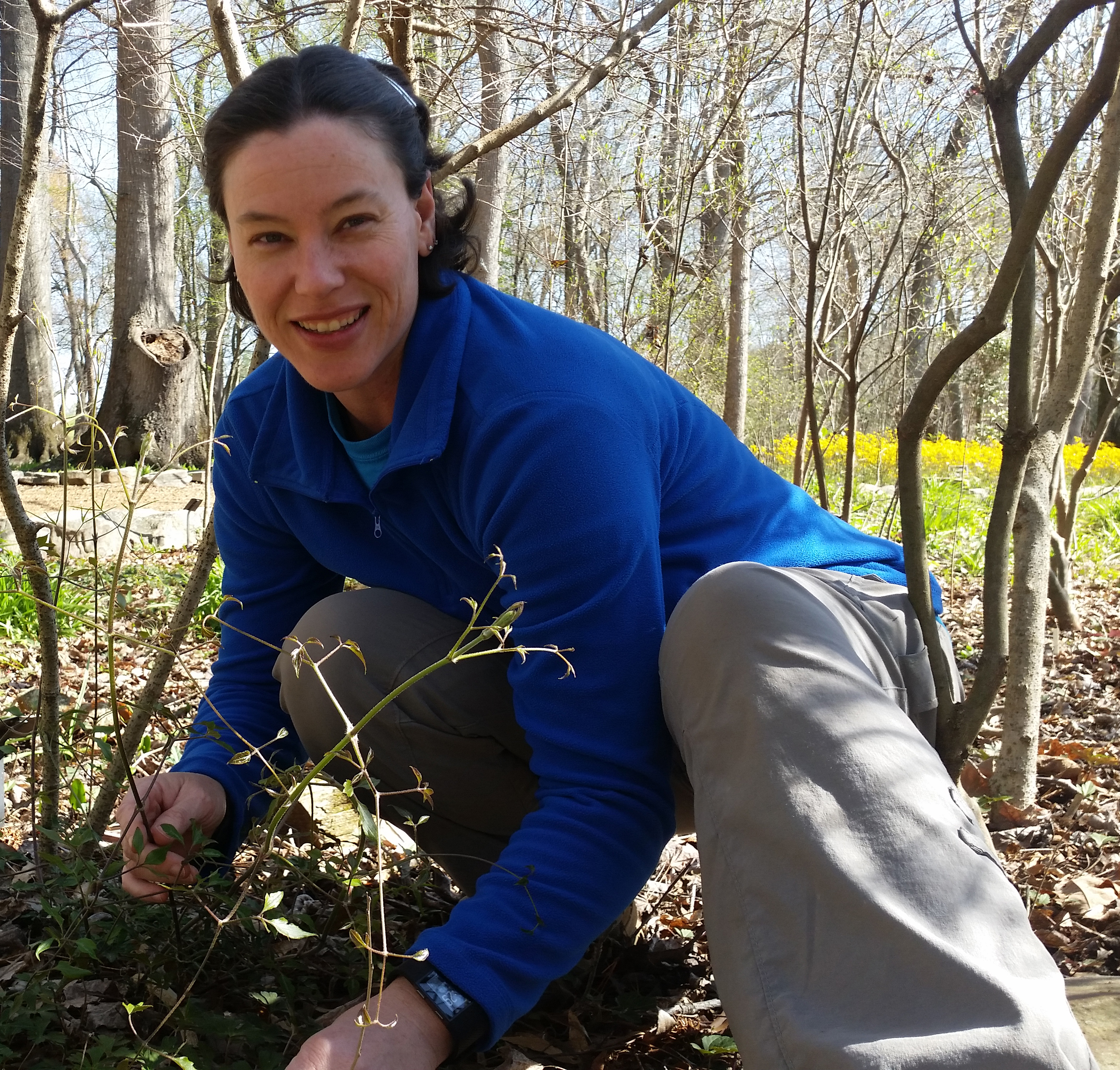
Athyrium filix-femina subsp. asplenioides, commonly known as southern lady fern, is a deciduous fern that is endemic to southern and eastern North America. This member of Woodsiaceae (the cliff fern family) features lacy erect, pinnatifid, lanceolate, light green fronds which grow in a dense circular clump to 2-3 feet tall and wide. The leaves of ferns are called fronds, and the leaflets are referred to as pinna. Southern lady fern has twenty to thirty pairs of elliptic, non-opposite, deeply cut pinna with narrow pointed tips. This Alabama native is often found in rich moist woods, meadows, and ravines throughout North America, Europe, and Asia. It does not flower but produces spores in the sori on the undersides of the fronds. The lacy foliage makes this an attractive addition to any shade garden, and it really shines in late summer to early fall. This small but easy-to-grow fern is great for beginners with part- to full-shade and average to moist soils. Tolerates deeper shade and drier soils than many other ferns, and is resistant to browsing by rabbits. Excellent for woodland gardens, shaded border fronts or shade gardens. No serious insect or disease problems.
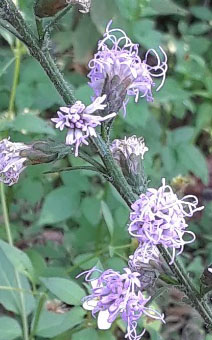
Liatris aspera, commonly known as rough blazing star, is a herbaceous perennial in Asteraceae (the sunflower family). Rough Blazing Star occurs in prairies, on limestone outcrops, and in oak-pine woodlands and roadsides in central and northern Alabama. This late-blooming perennial 2-4 feet tall and 1-1.5 feet wide from a globose corm. Stems are generally unbranched, and hairy. The narrow leaves grow smaller higher on the stem, and the rounded, pale purple flower heads are produced in September – October on long, terminal flower spikes. The flowers open from the top of the inflorescence towards the base. It prefers well-drained soil in full sun and is quite drought tolerant once established. Plants may need to be staked to prevent them from falling over, but it makes a good cut flower and attracts hummingbirds and butterflies. Rough Blazing Star is available as plants or seed from some wildflower nurseries.
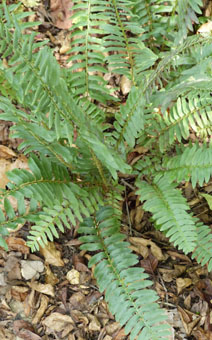
Polystichum acrostichoides, commonly known as Christmas fern, is an evergreen perennial fern that is native to eastern North America. This member of Dryopteridaceae (the wood fern family) typically occurs in dry and moist wooded slopes, moist banks and ravines throughout Alabama. Christmas fern grows in a clump up to 2 feet tall and wide featuring glossy, lance-shaped, evergreen pinnate fronds that provide good winter interest for the landscape. Although rhizomatous, this fern will not spread or naturalize, however, clumps will increase in size over time. It has no serious insect or disease problems but may develop crown rot if grown in poorly drained soils, particularly in winter. Christmas fern reproduces by forming spores. It is easily grown in organically rich, dry to average, well-drained soils in part- to full shade. Good for woodland gardens, shade gardens, native plant gardens, or in shady areas along walls or foundations. Provides excellent soil retention when massed on dry slopes to help combat erosion. Christmas fern is often available from native plant nurseries. Christmas fern tolerates rabbit and deer browse, drought, heavy shade, erosion, and shallow soil conditions better than many other native ferns.
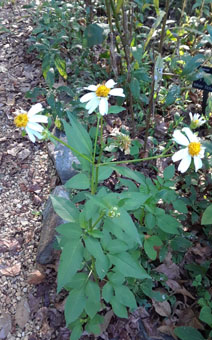
Bidens alba, known by a number of common names including Butterfly Needles and Common Beggarticks, is a native herbaceous annual or short-lived tap-rooted perennial in Asteraceae (the sunflower or aster family). Like other members of this family, it has tiny flowers organized into larger, aggregate flower heads resembling a single, radially symmetrical flower cupped by a ring of green bracts. Butterfly Needle often grows on dunes, disturbed woodlands, and roadsides, and is more common in the southern half of the state. Bidens alba blooms in September-October and each aggregate flower has up to 8 white ray flowers and 20-60 yellow disc flowers (center). The pollinated flowers yield fruit that is a fusiform achene with two barbed awns that stick to anything that brushes against it giving it the various common names. It prefers well-drained soil in full sun. This pretty fall bloomer should be planted away from well-traveled areas as the seed will readily attach to clothing and animal fur. It blooms profusely in the fall and attracts many butterflies and other insects. The crushed leaves have been traditionally used to treat wounds because of its antibiotic properties, and parts of the plant have been consumed as a vegetable. Butterfly Needles is sometimes available from native plant nurseries as seed. Here in north Alabama, it should be treated as an annual.
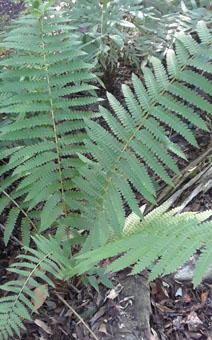
Osmundastrum cinnamomeum, commonly called Cinnamon fern, is a deciduous fern that occurs in moist soils along streams and on shaded ledges and bluffs throughout Alabama. This member of Osmundaceae (the royal fern family) typically grows in clumps up to 2-3 feet tall and wide, but can get taller in ideal conditions. Stiffly upright, fertile, spore bearing cinnamon-colored fronds appear in early spring and quickly fade to brown. The foliage is comprised of large “fiddleheads” that emerge from the crown of the plant in the spring and open into large, erect, pinnately compound, sterile fronds that remain attractive throughout the summer and turn yellow in fall. Cinnamon fern has no serious insect or disease problems and is an excellent selection for wet areas along streams, ponds, and water- or bog- gardens. It also grows well in shaded borders, woodland gardens, and native plant gardens with average to wet soil in part- to full-shade. This low maintenance fern tolerates rabbit browse, heavy shade, black walnut, and wet soils. Cinnamon Fern is widely available from nurseries and mail order catalogs. The roots surrounding the rhizome are often collected to produce a fiber for potting orchids and other epiphytes.

